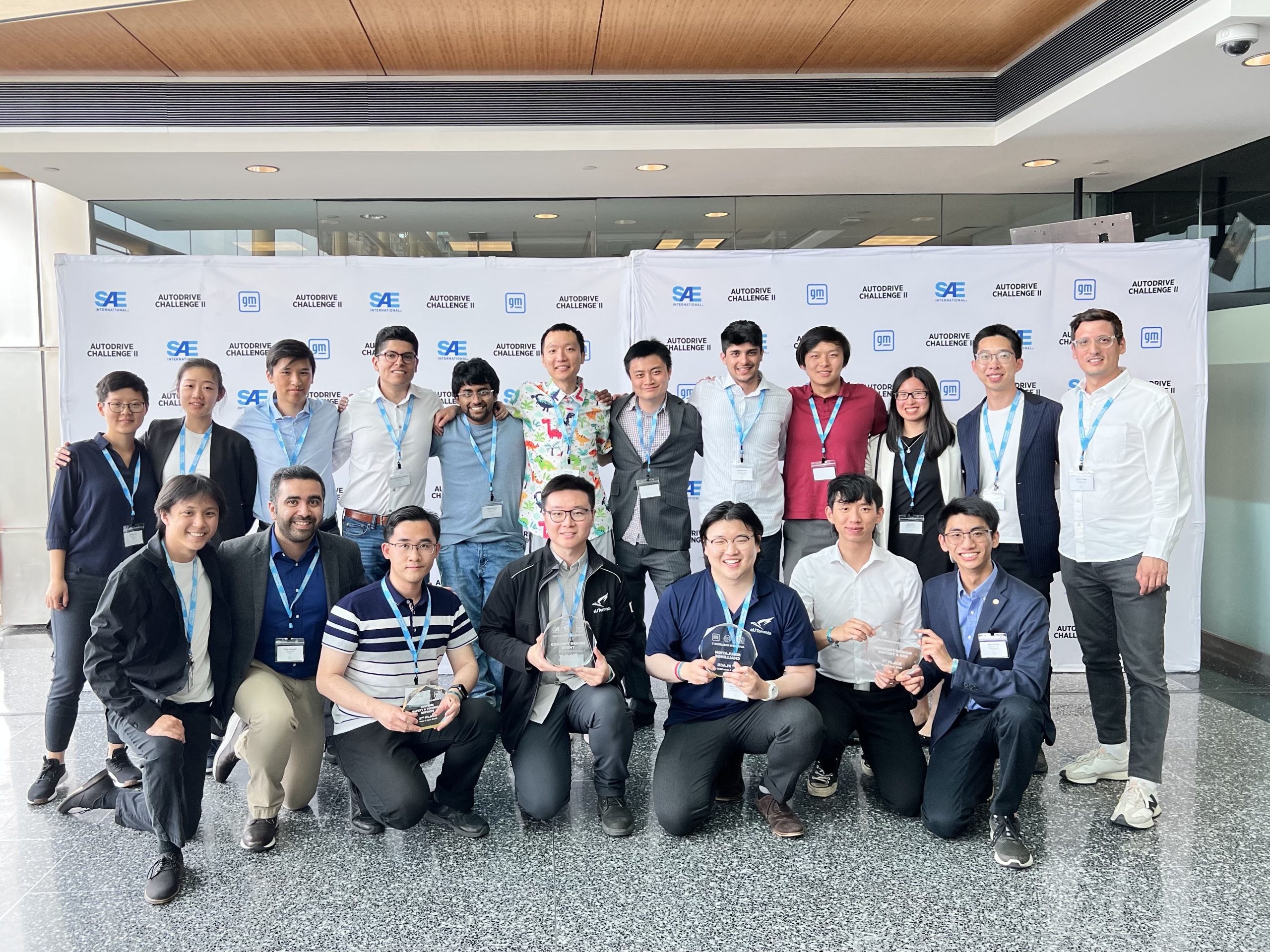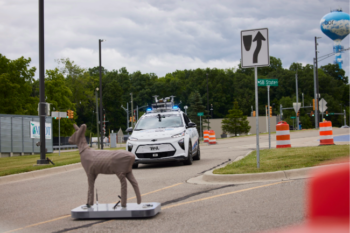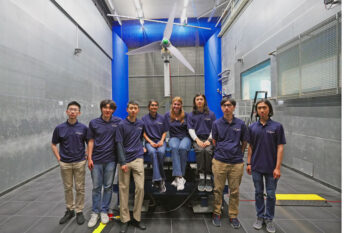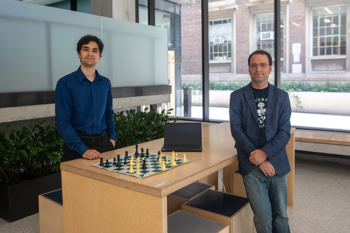How does a group of U of T Engineering students build an autonomous vehicle that bests its competition year after year? For the aUToronto team, the secret to success is an inclusive and supportive environment.
Since 2018, aUToronto, U of T’s self-driving car team, has put in a consistently strong showing at the SAE AutoDrive Challenge, with five first-place finishes over the past six years. The intercollegiate competition tasks participating teams with developing and demonstrating a fully autonomous-driving passenger vehicle at the end of the second series.
“We really rely on graduate students to help set the direction and sub-team leads to push on the technical development of the team,” says Jiachen (Jason) Zhou (EngSci 2T0 + PEY, UTIAS MASc 2T3), the team’s former principal.
“We have mentorship throughout our team, where students can reach out to senior members for advice and help.
“We also have a group with diverse educational backgrounds pushing forward on all the competition components. I’m so proud of all we have accomplished.”
Earlier this year, from June 4 to20, ten teams from across North America converged at the MCity Test Facility in Ann Arbor, Mich., to compete in the second year of the AutoDrive Challenge II.
“The teams were back to using a real vehicle this past summer, so the competition was so much more exciting as cars had to complete real driving challenges at the MCity test track,” says Professor Steven Waslander (UTIAS), academic advisor to the aUToronto team.
“The requirements get harder every year, and this year was no exception. But as always, one of the highlights for me was seeing the team together at the competition, working toward a common goal — aUToronto is such a supportive environment and the students on the team are super passionate and capable.”
Zhou says that the 2022–2023 team was the largest yet, with 109 active members. Approximately 70% of students were undergraduates from across U of T Engineering’s departments and divisions.
As a result of vehicle shortages in the previous season, the team had used a perception cart to hold their sensor rack design, knowing they would have to later incorporate it into a new Chevy Bolt Electric Utility Vehicle that would be provided by General Motors.
Their design employs light detection and ranging (LiDAR), a sensing technology that enables the self-driving vehicle to create 3D representations of its surroundings regardless of lighting conditions.
“Our main focus last season was on the vehicle integration,” says Zhou.
“What made this June competition especially challenging was that we only received the vehicle in February, which gave us fewer than four months to complete the cart-to-car autonomous vehicle conversion.”
Once the vehicle arrived, the integration process included incorporating the software, mounting the hardware, and wiring and tuning the electrical system. Goals included achieving both longitudinal control, which commands the vehicle to maintain its speed for a period, and lateral control, which directs the vehicle to make left and right turns.
The team voted to name their autonomous vehicle Artemis, after one of the daughters of Zeus. Zeus was the namesake of their first-generation vehicle, which competed in the first series of the AutoDrive Challenge.

In the latest competition, the aUToronto team placed second overall, including three first place finishes in the six static events, which focus on reports and presentations of the stationary vehicle.
The Concept Design Event was especially memorable for the team, says Zhou. They had 20 minutes to showcase their vehicle in a presentation, where the goal was to maximize audience engagement and viewer excitement for their technical design.
The team looked to Tesla’s 2019 Cybertruck demonstration for inspiration. While that Tesla stunt didn’t go as planned — when a designer threw a rock at the vehicle’s window to show its strength, it instead smashed the armor glass — it did get viewers’ attention.
“We designed our sensor rack with plastic panelling around it to make it waterproof,” says Zhou. “So, as we described how we made this sensor rack waterproof, we had two team members throw water on the vehicle.
“We not only got first place in this event, but a few judges also noted that we did a great job of showing our vehicle’s strengths.”
Still, the aUToronto team faced an unexpected test during the dynamic competition, where vehicle related challenges required navigating around stationary objects.
“Our cameras stopped working during the first part of the dynamic competition,” says Zhou.
“The scoring committee connected a scoring device to our vehicle to transmit vehicle data to their system, and every time they started recording, our vehicle’s cameras would freeze up and could not reactivate because we were in hands-off autonomous mode.”
The team eventually realized that the scoring device was generating an electromagnetic interference. They had to think quickly to solve the issue, including purchasing a new Ethernet cable with the best shielding capability.
“Thanks to our multi-modality sensor suite design with built-in system redundancy, we still managed to achieve first place in the Perception Challenge by only relying on LiDAR to detect and classify objects,” says Zhou.
“We are planning to implement an automatic sensor monitoring and restart to the vehicle for next year’s competition, so that in the event the cameras die unexpectedly, the software will reactivate it automatically.”
“We are excited to keep pushing Artemis towards level 4 autonomy,” adds Waslander.
“The team will continue to work at UTIAS to recreate many of the challenges that will be presented at MCity in Year 3. We’re also hoping to travel to Queen’s University and the University of Waterloo to take advantage of their test track facility to push our algorithms further and train the team on remote deployment earlier in the program.
“We are currently looking for new team members who are committed to developing as autonomous vehicle engineers and making strong contributions to our success in Year 3.”



